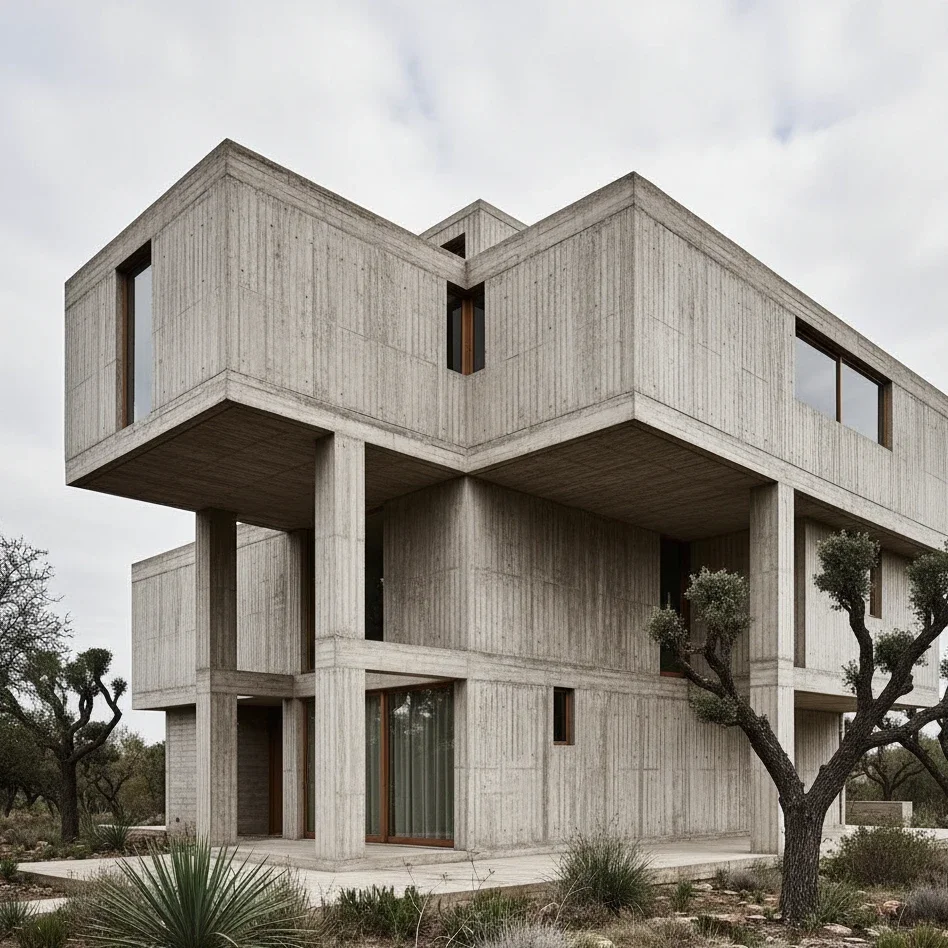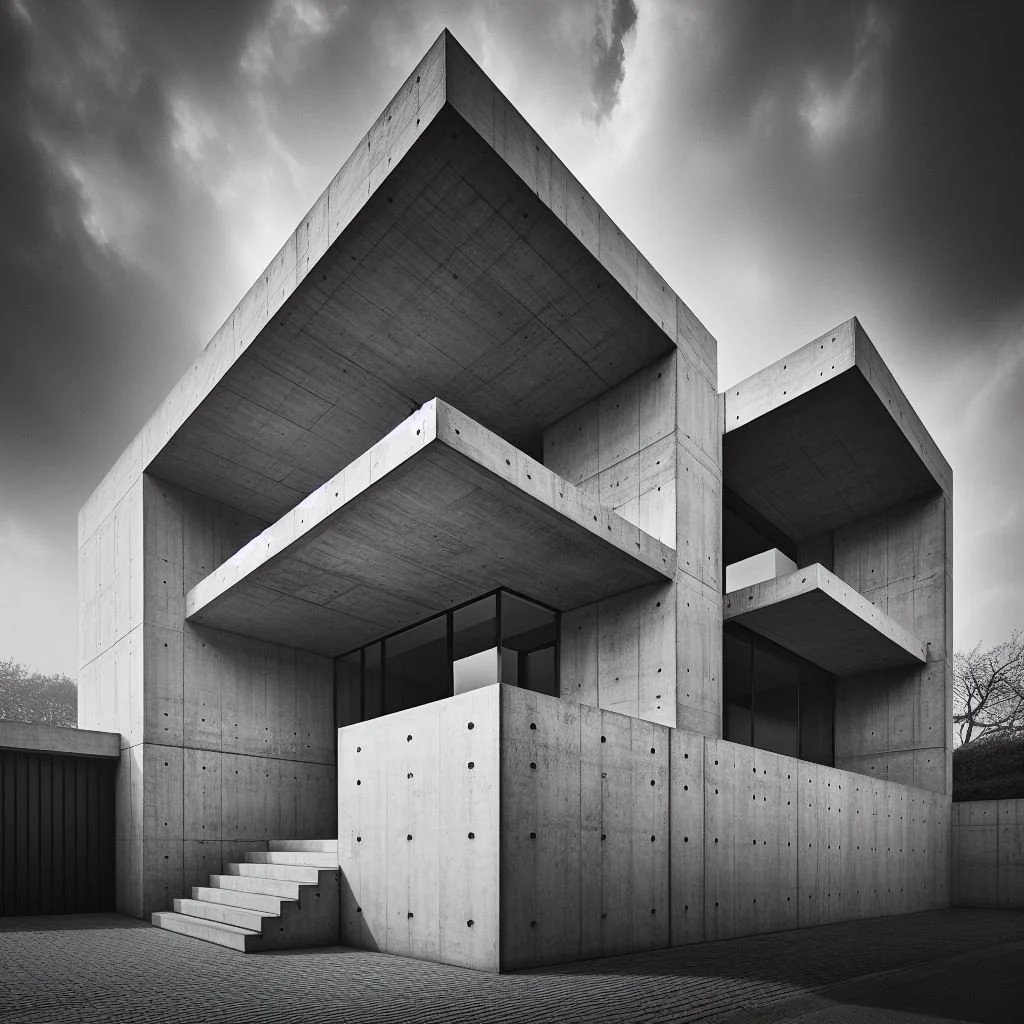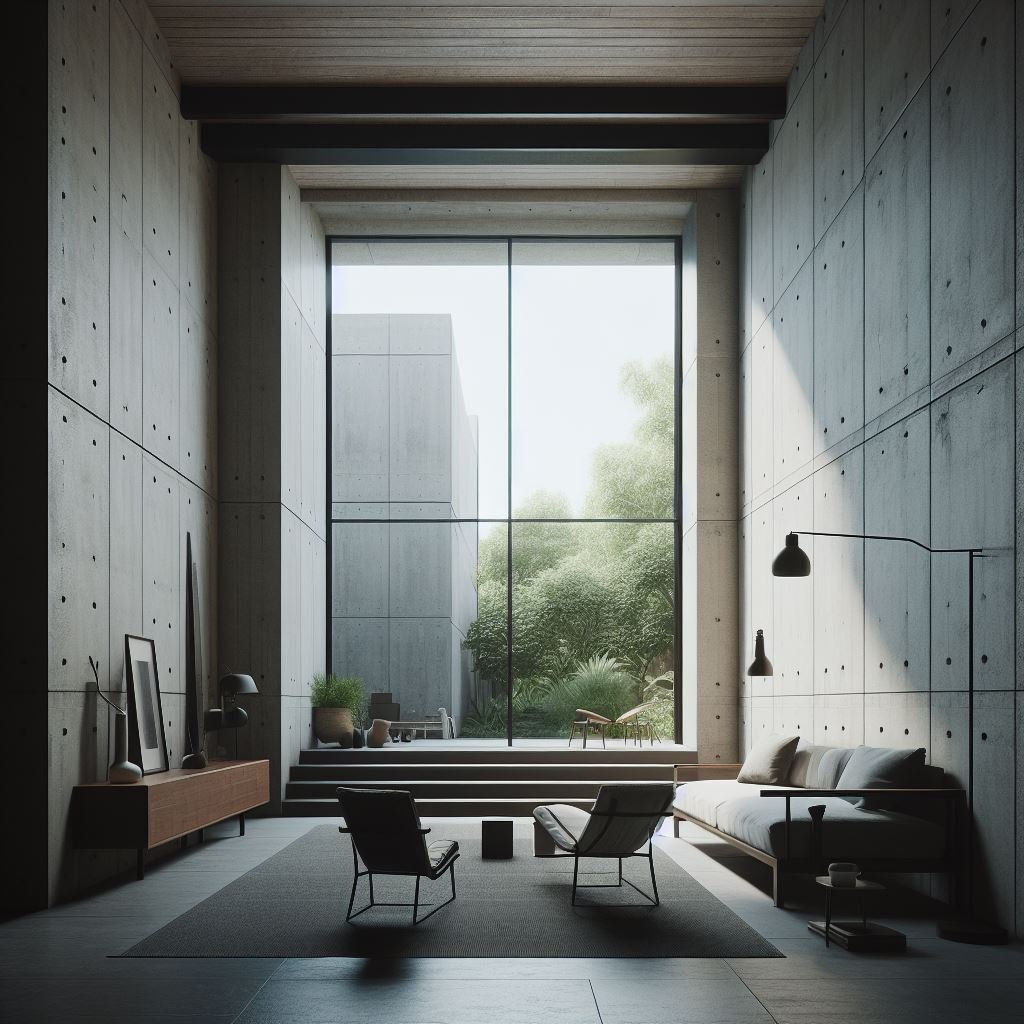Brutalist Vs Minimalist Vs Modernist Houses: Key Differences Explored
Discover the key differences between Brutalist, Minimalist, and Modernist houses to find which architectural style best matches your vision and lifestyle.
Brutalist, minimalist, and modernist houses showcase distinct philosophies that shape your living experience. Brutalism features bold, raw materials with a focus on community engagement, creating a sense of strength. Minimalism strips design down to essentials, promoting serenity through open spaces and clean lines. In contrast, modernism combines aesthetics and practicality, emphasizing innovation and natural light. Each style evokes different emotions: strength in brutalism, calm in minimalism, and creativity in modernism. Understanding these differences can deepen your appreciation of architectural design and its impact on your daily life, suggesting there's plenty more to explore.
Overview of Architectural Styles
When exploring architectural styles, you'll quickly notice the distinct characteristics that define each period and region. Each style reflects its historical context, shaped by the sociopolitical climate, technological advancements, and cultural influences of its time.
For instance, the Gothic style emerged during the Middle Ages, a period marked by religious fervor and a quest for transcendence, evident in its soaring cathedrals and intricate detailing.
As you investigate deeper, you'll find that styles like Baroque and Renaissance arose from a desire for expression and grandeur, highlighting the prevailing artistic trends and philosophies.
The rise of Modernism in the 20th century signified a break from tradition, embracing minimalism and functionality in response to industrial growth and urbanization.
Understanding these architectural styles isn't just about aesthetics; it's about recognizing how they encapsulate the essence of their times. Each structure tells a story, revealing the values and aspirations of the cultures that produced them.
Key Features of Brutalism
Brutalism stands out in the architectural landscape with its bold, raw aesthetic and unapologetic use of concrete. This style thrives on the starkness of concrete materials, often revealing the texture and imperfections that come with them. You'll notice how these structures embrace their urban context, seamlessly integrating into the gritty fabric of city life.
One of the defining features of Brutalist architecture is its geometric forms. These shapes, often massive and imposing, create a sense of monumentality that challenges traditional design norms. You can't help but feel their historical significance, rooted in post-war reconstruction and social reform.
Brutalism sought to address societal needs, prioritizing function over form to foster community engagement. The raw aesthetics of these buildings may evoke mixed feelings, but they undeniably make a statement. Each structure serves as a canvas for social impact, reflecting the ideals of accessibility and utility.
Characteristics of Minimalism
Minimalism, at its core, embraces simplicity and functionality, stripping away unnecessary elements to focus on what truly matters. This design philosophy values clean lines, open spaces, and a restrained color palette, creating an atmosphere that feels both serene and liberating.
When you step into a minimalist home, you immediately notice the absence of clutter, allowing you to breathe and think freely.
In minimalist design, every element serves a purpose. Furniture is often multi-functional, and spaces are designed to promote ease of movement.
You'll find that the use of minimalist materials, such as wood, glass, and metal, enhances the overall aesthetic, providing a tactile quality while maintaining a sleek appearance. These materials contribute to an organic feel, connecting the indoors with nature.
The beauty of minimalism lies in its ability to highlight essential elements without distraction. Each piece you encounter is carefully curated, inviting you to appreciate its form and function.
Ultimately, living in a minimalist environment encourages a sense of freedom, enabling you to focus on experiences that matter most, rather than being weighed down by excess.
Principles of Modernism
Modernism emerges as a distinct architectural and design philosophy that champions innovation and the breaking away from tradition. Its origins trace back to the early 20th century, fueled by a desire for new forms and ideas that reflect the rapidly changing society.
At the heart of modernism principles lies the belief in functionality over ornamentation, prioritizing simplicity and clarity in design.
You'll notice how modernism influences extend beyond architecture to art, literature, and philosophy, creating an interconnected web of ideas that celebrate progress. This movement encourages you to embrace materials like glass, steel, and concrete, enabling structures that aren't only aesthetically pleasing but also functional and efficient.
As modernism evolves, it continuously adapts to cultural shifts and technological advancements, pushing boundaries while maintaining its core tenets. The commitment to open spaces, natural light, and a connection to the surrounding environment remains steadfast, inviting you to experience a sense of liberation within the built environment.
Emotional Impact of Each Style
Each architectural style evokes distinct emotional responses that can greatly influence how we experience spaces. Brutalist houses, with their raw concrete and bold forms, often stir feelings of strength and permanence. This architectural expression can invoke a sense of awe or even intimidation, creating a powerful emotional resonance that challenges conventional beauty.
On the other hand, Minimalist designs strip away the extraneous, inviting a calm and serene atmosphere. The simplicity in form and function resonates with those seeking clarity and peace, allowing you to connect deeply with your surroundings. This style offers liberation through its unadorned aesthetic, promoting a sense of spaciousness that encourages introspection.
Modernist houses, characterized by their innovative materials and open spaces, create a dynamic emotional landscape. They embody freedom and progress, inspiring feelings of optimism and creativity. The interplay of light and space fosters an environment where ideas can flourish, making you feel engaged and alive.
Ultimately, your emotional journey through these styles can shape your daily experiences, influencing how you relate to the world around you. Each offers a unique lens through which you can explore your personal connection to space and architecture. And just as homeowners consider style and design, practical needs like to sell my house fast Kansas City with House Max also play a role when life calls for quick transitions.
Comparing Aesthetics and Functionality
Comparing aesthetics and functionality reveals how architectural styles can either harmonize or clash in their design intentions.
In a Brutalist home, you'll notice bold material choices—exposed concrete and steel—that create a raw, unapologetic beauty. This style prioritizes functionality, often sacrificing softer color palettes for stark contrasts.
On the other hand, Minimalist design embraces simplicity, using clean lines and neutral tones to enhance spatial dynamics. This creates an open environment, promoting freedom and tranquility.
Modernist houses blend both aesthetics and practicality through innovative textures and forms, often featuring large glass panels that invite natural light while emphasizing a sustainability focus. These designs reflect historical influences, offering a nod to the past while pushing architectural boundaries. In real estate, solutions like cash home buyers Philadelphia also highlight practicality, helping homeowners move forward with ease when transitions are necessary.
In examining how these styles interact, you'll find that texture contrasts and material choices can either enhance or detract from a home's purpose.
A thoughtfully designed space resonates more deeply when aesthetics align with functionality.
Conclusion
To sum up, understanding the distinctions between brutalist, minimalist, and modernist houses enriches your appreciation for architectural diversity. While some may argue that one style is superior, it's crucial to recognize that each serves unique aesthetic and functional purposes. Brutalism's rawness, minimalism's simplicity, and modernism's innovation all evoke different emotions and responses. Ultimately, your choice reflects personal values and preferences, showcasing how architecture can profoundly influence our lives and environments.




